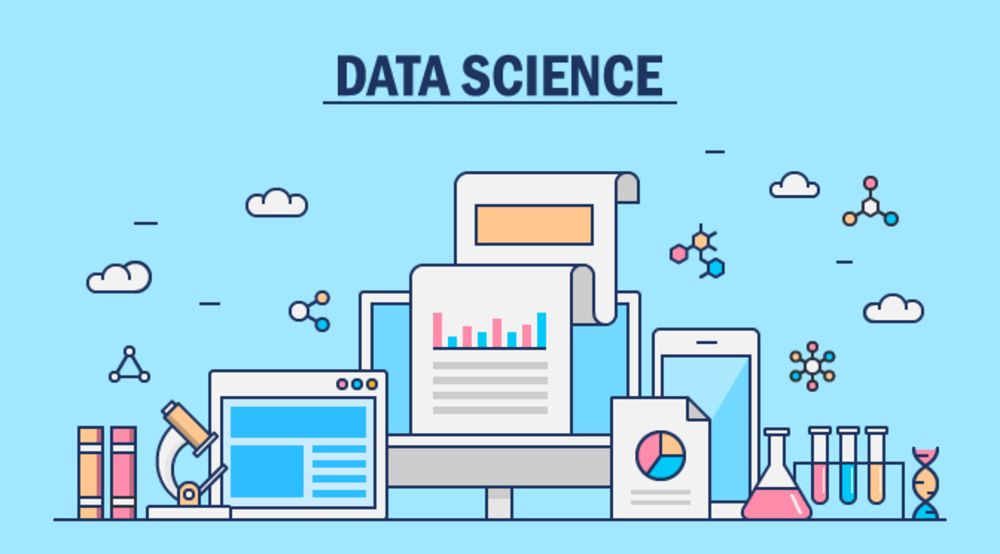A definitive guide to Data Science

The heart of information in today’s scenario is data. Woven together in the fabric of many different fields, lies the field of data science which encompasses statistics, machine learning, computer science and data analysis. Unveiling the common and yet not-so-common world of data science, we aim at giving you a peek into what this domain covers.
What exactly is data science?
A multidisciplinary subject, data science is the amalgamation of algorithm development, data interference and technology to solve complex problems analytically. With data at its core, this field of science draws raw information, streamlines it and stores it in data warehouses. This ordered data is ultimately mined and used to generate business value. Data science, thus, is the process of utilizing data to find appropriate solutions or predict relevant outcomes for a given problem statement.
This still sounds confusing, right? Let us take an example.
Suppose you had a tiring Sunday and you wake up late the next day and are late for office already. You have a client meeting scheduled in an hour’s time and you need to rush in order to reach on time. So, you quickly open the Uber app and look for cabs around you. But you notice something unusual about the cab-fares at this time of the day. There is a surge in the listed prices. What happened?
Here is when data science comes into play. Working professionals on weekdays, Monday morning for instance, rush to work early in the morning. A high demand for cabs is the cause for an increase in the cab fares. Data science algorithms, thus, ensure that cabs are always available to passengers even if it is at the cost of inflated prices. Uber makes use of data science to keep a track of the locations and time windows which see the maximum traction. This results in activating surge prices to keep more drivers on the road. In this manner, Uber benefits by maximizing the number of rides.
On similar grounds, data science guides the decision-making process of most fast-growing companies. Data science is what governs show recommendations on Netflix, the ads displayed on YouTube and Facebook. Netflix keeps an account of the type of shows you watch. Similarly, Amazon collects the users’ data, the products they search on the website and thus recommends products accordingly.
But the journey beginning from data collection to using it efficiently and effectively isn’t a one-step process. It comprises of the following steps:
1. Business Requirements
The process begins with understanding the requirements of business. The first step needs you to be clear with the problem statement in order to work on it in an organized fashion. In case of Uber, the business required the development of a dynamic pricing model. This would come into effect when a lot of people in a particular area request for rides at the same time.
2. Data Collection
The next step is that of collection of data. Uber collects data which includes information regarding weather, pick and drop locations, time, holidays, etc. It keeps a track of this data to make use of it later to shape and guide future business decisions.
3. Data Cleaning
This process is essential to delete unnecessary data which gets collected in the previous process. This redundant data increases complexity and thus needs to be minimized. Talking about Uber, a track of locations of cafe and restaurants isn’t required for the analysis of its surge pricing. So, it must be erased to minimize complications. The key to utilizing Data to make an inference is to not get lost in it.
4. Data Exploration and Analysis
This step requires brainstorming for data analysis. It is this stage where data is thoroughly examined and patterns in the same are analyzed. Also the heart of the entire process, this is where the picture starts getting clear.
5. Data Modelling
The analysis of data is then followed by data modelling which requires a machine learning model to be built. Data modelling makes use of the trends and insights collected in the previous stage. Records collected from thousands of customers are fed into the model. This makes the predicted outcome more precise. Machine learning algorithms play a vital role here.
6. Data Validation
The final model is then validated. When a new customer books a ride, its information is tallied with the historical data to look for false predictions and anomalies in the surge prices. In case a user comes across an issue, the data scientist at Uber fixes it accordingly.
7. Deployment and Optimization
This is the final stage of data science. Here, after testing the model and making improvements in its efficiency, it is deployed on the users. At this stage, customer feedback comes into account and any further issues are rectified.
The field of data science has, in all actuality, redefined the modern-day market. Ranging from the concept behind self-driving cars and credit card fraud detection systems to that of virtual assistants like Siri and Alexa, data science has it all covered under one roof. The world of data science has encapsulated a universe already. In addition, it has turned out to be the most promising job role in 2019. What more are you waiting for then? Get ready to take the plunge and dive into the pool of data science!
Login to continue reading
And access exclusive content, personalized recommendations, and career-boosting opportunities.
















Comments
Add comment